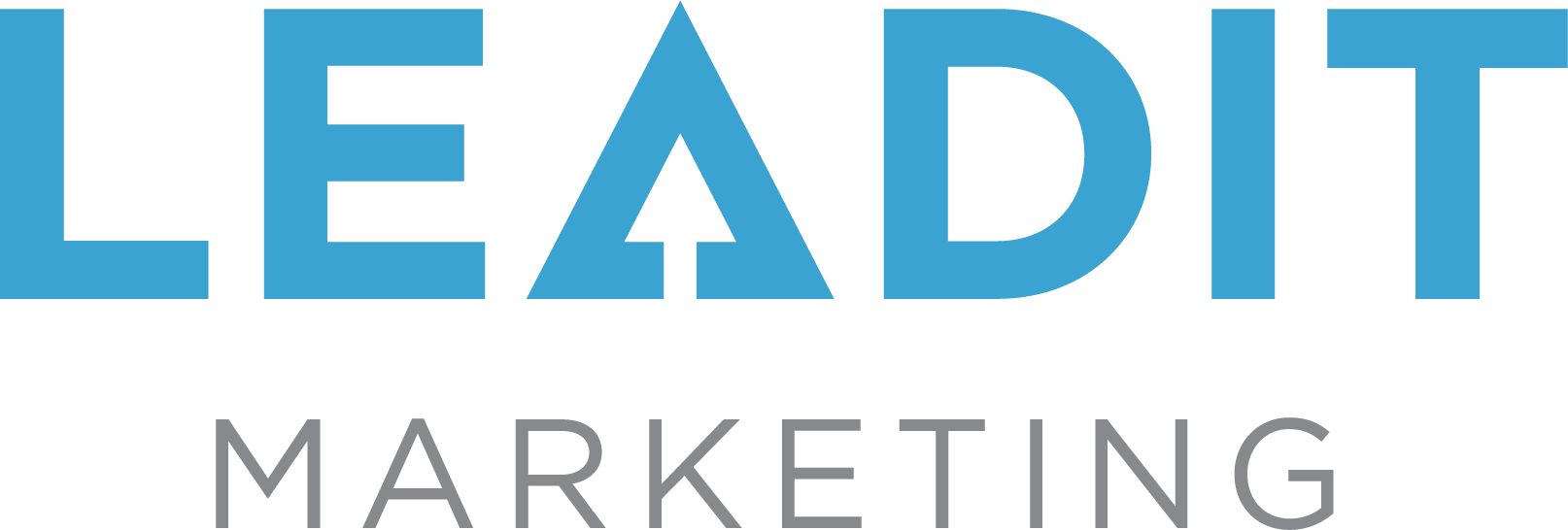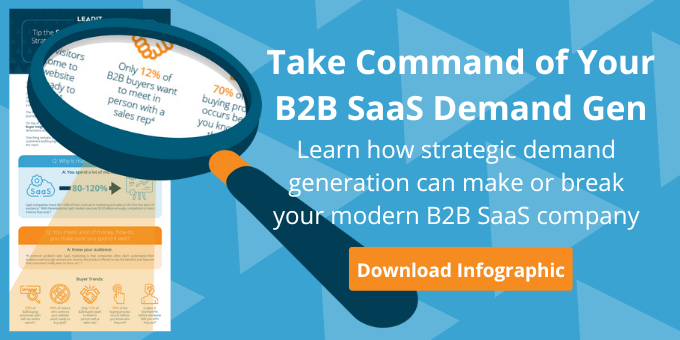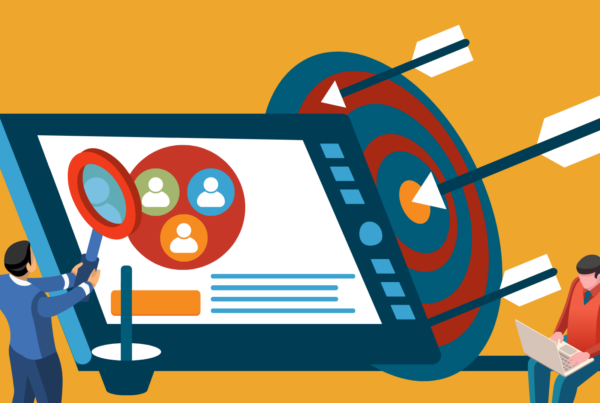B2B SaaS Marketing Trends to Watch in 2023
The only true constant in digital marketing for B2B SaaS companies is that it’s never constant. Marketing trends evolve as buyers and the way they consume content changes. Due to the nature of our day job at Leadit Marketing, we regularly evaluate the market to stay cutting edge on what is and isn’t working in demand generation for fast growing B2B SaaS companies.
The nature of B2B SaaS companies is that they are typically market innovators and early adopters of new technologies, so positioning them ahead of the pack when it comes to digital marketing is a requirement.
As we close in on 2023, some of the trends we’re seeing now that we know should be top of mind for B2B SaaS marketers include:
- Customer-centric marketing
- Engaging media and video content
- More personalized, value-driven experiences
- Marketing automation
B2B SaaS Companies Need to Prioritize Customer-Focused Marketing
In the past, we’ve seen many B2B SaaS companies identify one very specific target audience for their offering, and push all their marketing efforts to that group. This made digital marketing fairly simple because they only had to create one message for one audience. But as audiences drown out marketing and only listen when content is hyper-focused on their pain points, we know that this approach to targeted marketing just isn’t working anymore.
Even if your B2B SaaS offering solves a specific problem for a general audience, there are likely subtle nuances that mean a lot of differences for one general audience. With all the options that exist for your customers, they are looking for marketing that will speak directly and specifically to them and their needs. Buyers expect you to understand their language, needs, and cater to them. Target market generalizations won’t make an impact moving forward.
This is exactly why we are prioritizing lead segmentation and persona messaging strategies for our customers in 2023. B2B SaaS companies will really need to understand the individual pain points of their varied audiences, and speak to them so clearly that those prospective customers know your offering is exactly what they need. This will also require a well-defined and targeted go-to-market (GTM) strategy.
An effective B2B SaaS Go-To-Market Strategy will:
- Clearly define your ideal customer profile (ICP) so your message is specific and targeted
- Outline exactly what your competitors are doing and how you differentiate yourself from them
- Develop strategic messaging to capture the interest of your ICP
- Set targets for customer acquisition and campaign performance
Clearly defining your audience and either building and refining your GTM strategy will need to be a strong focus in 2023 as both your B2B SaaS customers and competitors become more sophisticated in their marketing strategies.
Video Content is King for Fast Growing B2B SaaS Companies
As you look to connect with your different audience segments, we’ve been observing the rise of video content on social media platforms, websites and other marketing channels. For the past few years we’ve seen this trend rising, but this marketing form is now officially dominating the digital marketing space. Studies show 79% of users prefer video to text when learning about a product or service.
Why is video content such a popular way to market your B2B SaaS company exactly?
- It makes explaining complicated functionality easy and straightforward
- It allows companies to put a face to their brand to build the audience trust factor
- It is usually engaging, fun and quick as attention spans are waning online
Because video streaming is now the primary way in which people consume information online, your B2B SaaS company may be missing out on a huge percentage of online attention by not investing in this approach. Studies have shown that 83% of marketers say video generates leads, and 87% report that video usage has boosted traffic to their websites. Video is also a crucial element of building an effective SEO strategy.
B2B SaaS Marketing is a Lot More than Selling
The days of marketing merely to speak to the features and functionality of your SaaS offering have been gone for quite some time. We know that buyers are much more sophisticated in the way they consume information and evaluate their investments. They typically either want to be entertained or to learn something new – the latter being what value-driven marketing is all about.
This focus on value-driven marketing, bringing something of value to your audience, is only getting stronger. B2B SaaS companies will need to step up their game in 2023. We see the growing importance of creating content that is educational, engaging, and valuable for your specific audience.
It’s no surprise that your audience is busy and overwhelmed with options for content to consume. Content that is merely a plug for your B2B SaaS offering won’t be enough to attract and keep attention. B2B SaaS companies in 2023 will need to create value-driven content that offers more than just insight into your offering, but instead showcases your thought leadership in your industry.
The Evolution and Growth of Marketing Automation
The marketing trends we see for 2023 and beyond require reliable data, specifically for targeted audiences, and a systematic approach to marketing to them. But how is that done if you’re using manual processes in your marketing efforts?
This is why automation in B2B SaaS demand generation has become so important. The path a buyer takes interacting with your brand and business will give you all the information you need to know about how they should be segmented and marketed to in the future. But this isn’t the marketing automation of the past, or even today. The granularity of details and segmentation of the future is taking automation to another level.
Automating your marketing efforts with these segments in mind and pushing the right content to the right audience based on the data you collect about them is what will give your customers that feeling of you knowing exactly what they need and when. In the past you may have used automation to push out content based on details collected or assumptions made without that content being dynamic at all, but the sophistication in the data we can collect about audiences changes that.
That kind of attention to detail doesn’t come without a strategic plan for collecting consumer behavior data and automatically pushing content to them based on that data. Automations need to be put in place to objectively observe behavior, segment audiences and drive marketing efforts based on what your audience is telling you about their needs. That’s truly the future of marketing.
As buyer sophistication evolves, so should your marketing strategy.
Let the Leadit team of B2B SaaS GTM strategists help you to develop on-trend and innovative marketing strategies based on what your market wants from you now and in the future. Book a 30-minute consultation to learn more.














